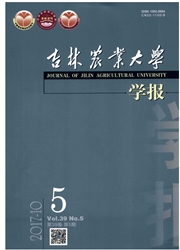

 中文摘要:
中文摘要:
通过对长白山地区大型真菌调查发现共有89科,275属,858种,这些真菌分布于从低海拔到高海拔的阔叶林带、针阔混交林带、针叶林带、亚高山岳桦林带和高山苔原带5个不同植被类型中。研究发现:5个不同植被类型中针阔混交林带的Shannon多样性指数最高,为5.73,其次是阔叶林带多样性指数为5.49,针叶林带多样性指数为4.96,亚高山岳桦林带多样性指数为4.48,而高山苔原带的最低,为3.34。在区系组成上主要以北温带区系成分为主。同南美洲、非洲热带等热带—亚热带地区存在着一定的历史渊源。在不同植被区中大型真菌分布特征具有明显的垂直分布特性,同时还发现植物物种组成差异越大的植被类型区其大型真菌的相似性越小。
 英文摘要:
英文摘要:
A total of 858 species of macrofungi,belonging to 275 genera of 89 families,were found by field surveys in Changbai mountains. Macrofungi distributed in 5 vegetation types from low to high latitude,including broad-leaved forest,mixed forest,coniferous forest,Betula ermarnii forest and alpine zone. The surveys show that the Shannon index is 5. 73 in mixed forest which hits the maximum value,followed by 5. 49 in broad-leaved forest.The Shannon index is 4. 96 in coniferous forest and 4. 48 in alpine zone. The lowest is 3. 34 in alpine zone. The mycobiota in this region is mainly north temperate,with certain relationships with South America,tropical Africa and other tropical to subtropical areas. In different forest types,macrofungi show a distinct vertical distribution pattern.The similarity of species composition of macrofungi shows a negative correlation with the difference of species composition of plant.
 同期刊论文项目
同期刊论文项目
 同项目期刊论文
同项目期刊论文
 期刊信息
期刊信息
